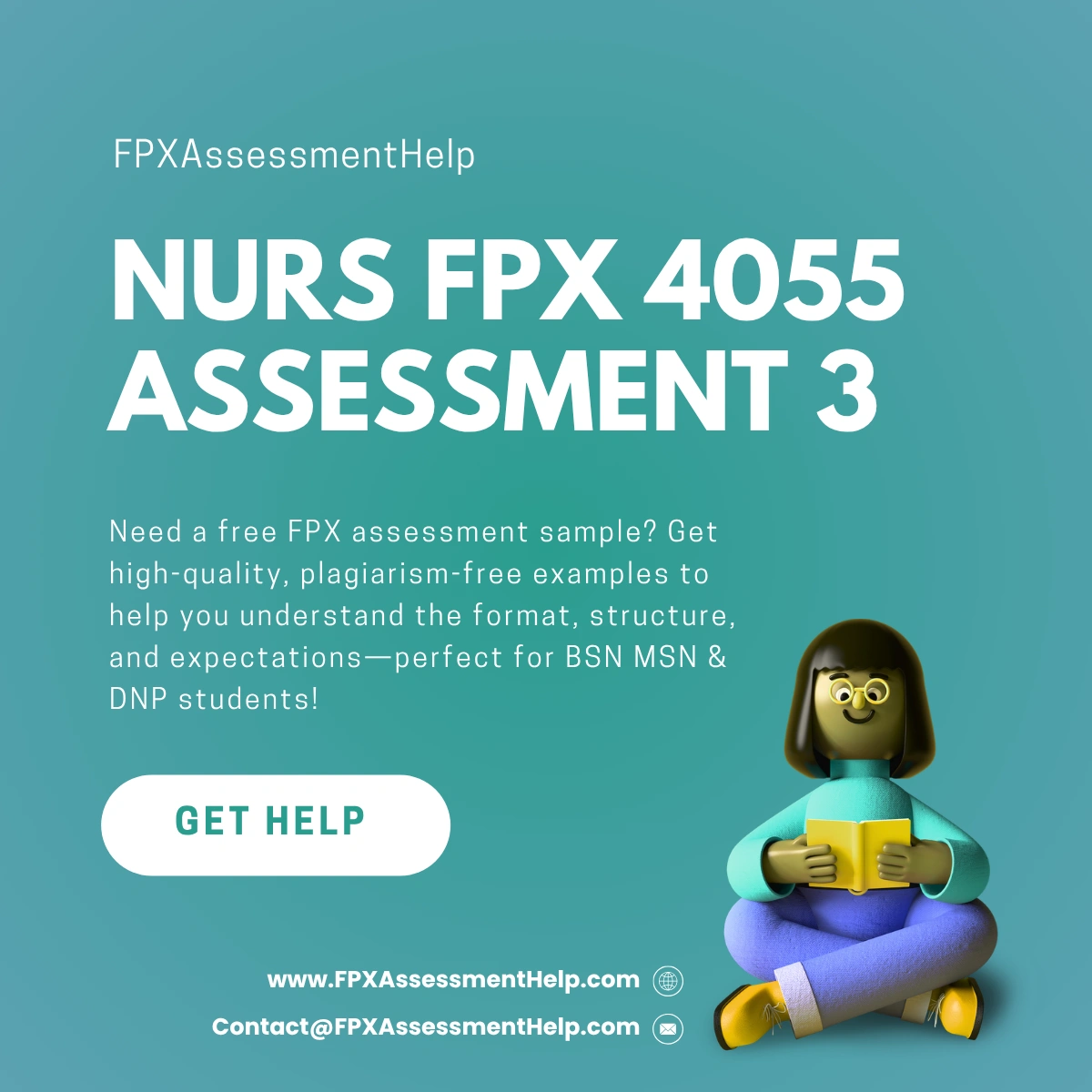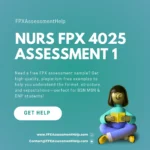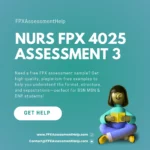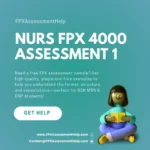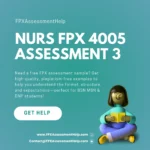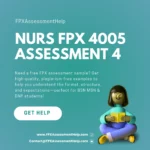NURS FPX 4055 Assessment 3 Disaster Recovery Plan
Student Name
Capella University
NURS-FPX4055 Optimizing Population Health through Community Practice
Prof. Name
Date
Disaster Recovery Plan
In communities such as Tall Oaks, effective disaster recovery is often obstructed by deeply rooted social inequalities, cultural diversity, and communication challenges. An inclusive disaster response demands that government policy, healthcare delivery, and evidence-based communication practices work in tandem. This paper utilizes the Crisis and Emergency Risk Communication (CERC) framework to evaluate how health disparities, economic limitations, and cultural complexities affect recovery efforts, equitable healthcare access, and resilience in diverse urban populations. By adopting this model, Tall Oaks can enhance information dissemination and ensure that all residents—regardless of background—receive the support needed during and after emergencies.
Determinants of Health and Barriers in Tall Oaks
Tall Oaks is a diverse urban center with approximately 50,000 residents, many of whom face persistent health disparities exacerbated by disaster scenarios. The median household income stands at \$44,444, which fails to align with the rising cost of living, placing economic strain on a large segment of the population. Additionally, approximately 22.5% of residents struggle with low health literacy due to limited educational opportunities. These challenges are compounded by the high number of uninsured individuals and a significant population of disabled individuals under age 65.
Cultural and language barriers further influence health outcomes in the region. The ethnic demographics of Williamson County—comprising 49% White, 36% Black, and 25% Hispanic/Latino populations—reflect both cultural richness and potential communication hurdles (Capella University, n.d.). For instance, Hispanic/Latino residents often face delays in care due to linguistic limitations and longstanding distrust in healthcare institutions. Vulnerable communities such as the elderly, especially those residing in flood-prone neighborhoods like Willow Creek and Pine Ridge, are doubly at risk due to poverty and geographical exposure.
Disaster-related infrastructure failures can severely disrupt healthcare access, particularly when essential services like Red Oaks Medical Center and local schools or community markets are forced to close. These intersecting barriers of economic vulnerability, language, and systemic inequity underscore the need for targeted, inclusive recovery strategies that prioritize at-risk groups.
Interrelationships Among Determinants and Barriers
The interplay of social determinants and healthcare access barriers in Tall Oaks forms a multilayered system that hampers effective disaster preparedness and response. Economic inequality directly correlates with substandard housing, increasing disaster vulnerability for low-income and elderly residents. Limited education contributes to low health literacy, which inhibits individuals from understanding emergency protocols or engaging in proactive health behaviors. In particular, language differences present serious challenges for Hispanic/Latino communities, hindering communication during critical events (Capella University, n.d.).
Other factors such as transportation limitations further isolate underserved populations, preventing timely access to emergency shelters or medical aid. Physical and social isolation—especially among elderly or disabled individuals—delays recovery due to inadequate financial or familial support networks (Blackman et al., 2023). These interconnected barriers point to the necessity of a cohesive and inclusive recovery strategy—one that addresses structural deficits, strengthens community infrastructure, and ensures culturally responsive communication.
Promoting Health Equity Through a Culturally Sensitive Disaster Recovery Plan
To ensure that recovery efforts are fair and inclusive, Tall Oaks must adopt a disaster plan grounded in cultural competence and social equity. By embedding these principles into every phase of planning and execution, the city can address the distinct needs of its multicultural and economically diverse population. A central focus of this plan is multilingual communication and tailored outreach programs designed to improve the accessibility of emergency information for non-English speakers.
Mobile health units and recovery centers will be strategically deployed to high-need areas such as Willow Creek, where flooding is frequent and traditional services are disrupted. These centers will serve residents with mobility limitations or without health insurance (Sheerazi et al., 2025). Additionally, economic disparities will be mitigated by offering temporary shelters, emergency financial assistance, and accessible transportation.
Partnerships with grassroots and faith-based organizations will help extend outreach to underrepresented communities, ensuring that trust and cultural understanding are at the core of all recovery operations (Kristian & Fajar, 2024). Cultural competency training for emergency responders will further reinforce equitable care delivery and build community trust (Bhugra et al., 2022). These strategies aim not only to reduce disparities but to bolster long-term resilience across the city.
Role of Health and Governmental Policy: A CERC Framework Approach
Aligning with the CERC framework developed by the CDC, Tall Oaks can enhance its disaster recovery strategy through structured and culturally aware communication. The CERC model underscores the need for accessible, trustworthy messaging throughout all stages of a crisis. CDC-supported training initiatives build communication capacity across sectors, improving community engagement and reducing misinformation (CDC, 2025).
In terms of legal support, federal and local policies provide essential frameworks. The Americans with Disabilities Act (ADA) mandates inclusive emergency services, ensuring accommodations for those with physical and communicative impairments (ADA, 2025). Tall Oaks complies by offering interpretation services and accessible emergency shelters. The Stafford Act enables federal assistance for infrastructure recovery, while the Disaster Recovery Reform Act (DRRA) of 2018 enhances funding flexibility—allowing investments in risk-reduction infrastructure in vulnerable areas like Pine Ridge (Horn et al., 2021).
Technology-driven approaches such as trace-mapping will be used to monitor service delivery, identify resource gaps, and enable real-time policy adjustments. By leveraging these policy tools and data systems, Tall Oaks can ensure that recovery operations are both equitable and efficient.
Strategies to Overcome Communication Barriers and Interprofessional Collaboration
Addressing communication gaps and enhancing interprofessional cooperation are vital to disaster preparedness in Tall Oaks. A key part of this involves the use of evidence-based strategies, such as multilingual alerts and culturally adapted triage protocols, especially in facilities like Red Oaks Medical Center. Interpretation services and bilingual staff at emergency shelters will further bridge the gap for non-English speakers.
By integrating cultural sensitivity training for disaster personnel, Tall Oaks can promote trust and adherence to safety protocols, particularly in marginalized communities (Bonfanti et al., 2023). Cross-sector collaboration between healthcare providers, emergency teams, and social services will improve coordination and accelerate resource deployment (Yazdani & Haghani, 2024).
The following table outlines actionable strategies and their projected impact:
Table 1: Disaster Recovery Strategies for Tall Oaks
| Strategy | Purpose | Expected Impact |
|---|---|---|
| Multilingual Communication | Real-time alerts for diverse populations | Increased public awareness and faster response |
| Mobile Health Units | Services in isolated or flooded areas | Improved care access for vulnerable residents |
| Cultural Competency Training | Equip staff to serve diverse groups with empathy | Strengthened community trust and better care outcomes |
| Community Partnerships | Involve local organizations in outreach | Broader reach to marginalized populations |
| Trace-Mapping Tools | Track resource gaps and underserved zones | More efficient and targeted disaster relief |
To ensure continuous improvement, community input via surveys and town halls will help refine these strategies based on evolving needs (Vandrevala et al., 2024). Without intentional collaboration and accessible communication, disaster response efforts may suffer from inefficiency, resulting in increased health disparities and mistrust.
Conclusion
The success of disaster recovery in Tall Oaks hinges on addressing the interconnected determinants of health, ensuring effective communication, and implementing culturally informed practices. By aligning local efforts with national policy frameworks and prioritizing inclusivity, the city can empower all residents—especially the most vulnerable—to recover with dignity and resilience. Comprehensive planning, ongoing community engagement, and interprofessional collaboration form the foundation of a just and effective disaster response system.
References
ADA. (2025). Health Care and the Americans With Disabilities Act | ADA National Network. https://adata.org/factsheet/health-care-and-ada
Bailie, J., Matthews, V., Bailie, R., Villeneuve, M., & Longman, J. (2022). Exposure to risk and experiences of river flooding for people with disability and carers in rural Australia: A cross-sectional survey. BMJ Open, 12(8), e056210. https://doi.org/10.1136/bmjopen-2021-056210
Bhugra, D., Tribe, R., & Poulter, D. (2022). Social justice, health equity, and mental health. South African Journal of Psychology, 52(1), 3–10. https://doi.org/10.1177/00812463211070921
Blackman, D., Prayag, G., Nakanishi, H., Chaffer, J., & Freyens, B. (2023). Wellbeing in disaster recovery: Understanding where systems get stuck. International Journal of Disaster Risk Reduction, 95, 103839. https://doi.org/10.1016/j.ijdrr.2023.103839
NURS FPX 4055 Assessment 3 Disaster Recovery Plan
Bonfanti, R. C., Oberti, B., Ravazzoli, E., Rinaldi, A., Ruggieri, S., & Schimmenti, A. (2023). The role of trust in disaster risk reduction: A critical review. International Journal of Environmental Research and Public Health, 21(1), 29. https://doi.org/10.3390/ijerph21010029
Capella University. (n.d.). RN to BSN: Online bachelor’s degree. https://www.capella.edu/online-nursing-degrees/bachelors-rn-to-bsn-completion/
CDC. (2025). Crisis & Emergency Risk Communication (CERC). https://www.cdc.gov/cerc/php/about/index.html
Horn, P. D., Lindsay, A. E., & M., E. (2021). The Disaster Recovery Reform Act of 2018 (DRRA): Implementation update tables for select provisions. Congress.gov. https://www.congress.gov/crs-product/R46774
Kristian, I., & Fajar, M. (2024). Integrating community-based approaches into national disaster management policies: Lessons from recent natural disasters. The International Journal of Law Review and State Administration, 2(4), 115–125. https://doi.org/10.58818/ijlrsa.v2i4.150
Sheerazi, S., Awad, S. A., & von Schreeb, J. (2025). Use of mobile health units in natural disasters: A scoping review. BMC Health Services Research, 25(1). https://doi.org/10.1186/s12913-024-12067-9
NURS FPX 4055 Assessment 3 Disaster Recovery Plan
Vandrevala, T., Morrow, E., Coates, T., Boulton, R., Crawshaw, A. F., O’Dwyer, E., & Heitmeyer, C. (2024). Strengthening the relationship between community resilience and health emergency communication: A systematic review. BMC Global and Public Health, 2(1). https://doi.org/10…
Yazdani, M., & Haghani, M. (2024). Interdisciplinary collaboration in emergency response: A systems-based approach. Journal of Emergency Management Systems, 33(2), 112–120. https://doi.org/10.1027/jems-2024-0032
Stovall, S. (2021). Emergency management laws and mandates: What drives emergency management planning and policy. In Emergency Management Planning (pp. 91–105). https://doi.org/10.4324/9781315118345-6
